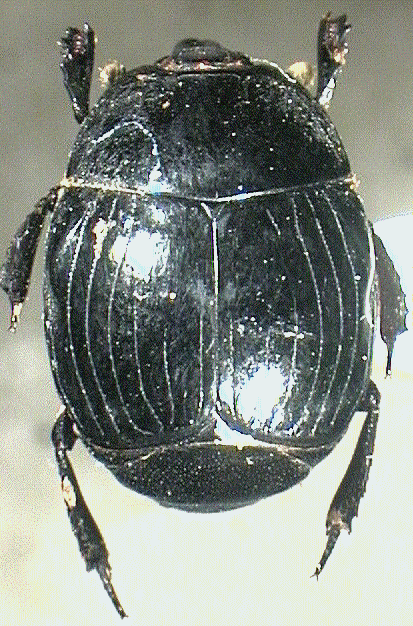
Hister boleti: Lewis, 1915, 55 [Shinten].
Hister (Hister) boleti: Miwa, 1931, 56 [Shinten]; Kamiya and Takagi, 1938, 30.
Original description (Ohara, 1999).
Type material. Holotype (SEHU). Male. Point-mounted; genitalia dissected; genitalia in balsam on a plastic slide; labeled: 1. Shi Nan Shan, near Liu Kui, S-Taiwan, 15.VII.1986, Col. K. Baba; 2. M. Ohara, no. 9944; 3. Holo-type, Margarinotus (Ptomister) babai M. Ohara (red label). Paratypes. 18 exs. Nantou Hsien: Mt. Holuan (1 female, 29/vii/1983), K. Ra; (2 females, 25/vii/1984), J. Luo; Mufu-zhongxin (1 female, 27/vii/1983), J. Luo; Sungkang, 2,000m (1 male and 4 females, 2/viii/1992), Chin-Kin Yu; Huisun Forest (1 ex., 15/ix/1966), Y.Y. Lien; Suifeng (2 males and 2 females, 13/viii/1992), C.K. Yu. Chiai Hsien: Fenchifu (2 males and 1 female, 30/vii/1981), K. Matsuda. Kaohsiung Hsien: Shyk shan, Near Liukuei (1 female, 28/vi/1986), K. Baba.
Description. Body length, PPL, male, 6.216.90 mm,
female, 6.427.94 mm, PEL, male, 5.385.66 mm, female,
5.666.28 mm. Width, male, 4.85.04 mm, female, 4.855.31
mm. Biometric data are given in Table 5. 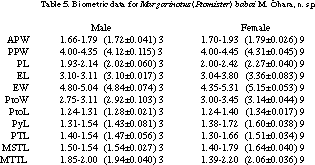 Body
oblong-oval, black and shining.
Body
oblong-oval, black and shining.
Frontal stria of head (Fig. 16A) complete, crenate and deeply impressed, its basal end deeply excavate. Disk of head sparsely and finely punctate.
Marginal pronotal stria (Fig. 16B) interrupted behind head and complete laterally. Outer lateral stria complete. Inner lateral stria complete laterally, interrupted behind eyes (sometimes complete anteriorly and strongly bent behind eyes), and the apical portion behind head nearly straight. Disk of pronotum sparsely covered with microscopic punctures, which are coarse between lateral striae. Antescutellar area with a longitudinal puncture.
Epipleural fossette clothed with microscopic punctures. Marginal elytral stria absent. Marginal epipleural stria complete and well impressed. Elytra (Fig. 16B) with a slight subapical impression. External subhumeral and 1st to 3rd dorsal striae complete and strongly crenate. Internal subhumeral stria absent. Oblique humeral stria present on basal third. Fourth dorsal stria present on apical half and with a short basal rudiment. Fifth dorsal stria present on apical third. Sutural stria present on apical half. Disk of elytra evenly clothed with microscopic punctures.
Pygidia (Fig. 17C) finely alutaceous. Propygidium sparsely and coarsely punctate, and its intervals with scattered minute punctures. Punctation of pygidium dense and coarse, with minute punctures intermingled.
Prosternal lobe rounded at apex, its marginal stria interrupted at middle. Disk of lobe coarsely punctate laterally. Prosternal keel with carinal striae. Anterior margin of mesosternum (Fig. 16C, 17E) strongly emarginate at middle, its marginal stria complete. Disk of mesosternum sparsely with microscopic punctures. Meso-metasternal suture complete, obtusely angulate at middle. Lateral mesosternal stria extending posteriorly, and its basal end attaining to the middle of meso-metasternal suture. Oblique stria extending inwardly from the apical third of the metasternal-metepisternal suture. Intercoxal disk of metasternum sparsely with microscopic punctures. Lateral disk sparsely covered with coarse and shallow punctures, and scattered with fine punctures throughout; without hair.
Intercoxal disk of 1st abdominal sternum sparsely with microscopic punctures, without coarse punctures along abdominal stria, and striate on apical two-thirds on each side.
Protibia (Fig. 16D, E) with 5 denticles on outer margin and 1 denticle on apical margin. Profemur with posterior marginal stria on apical fifth.
Male genitalia as shown in Fig. 18.
Female genitalia as shown in Fig. 16F. Spermatheca consisting of 10 small sacs.
Distribution. Taiwan.
Remarks. This new species was referred to M. (P.) boleti by Lewis (1915), but it is distinguished from boleti by the following characters: the denser punctation of the propygidium and pygidium, the inner lateral pronotal stria usually interrupted behind eyes, the absence of coarse punctures of the intercoxal disk of 1st abdominal sternum, and slight differences in the structure of male genitalia (Fig. 18).
This species is named after the late Dr. Kintaro Baba, who is collector of the holotype, in recognition of his great contribution to the natural history of Coleoptera in Japan and Taiwan.
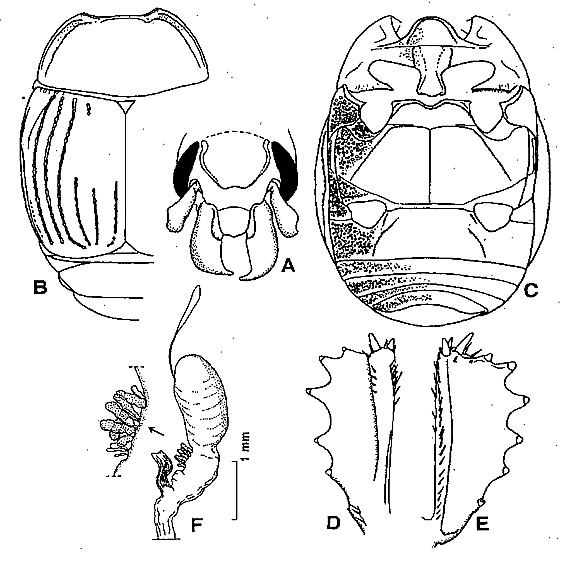
Fig. 16. Margarinotus (Ptomister) babai M. Ohara, n. sp. A: Head, frontal view. B: Pronotum and left elytron. C: Ventral side of adult. D: Left protibia, dorsal view. E: Ditto, ventral view. F: Female genitalia, lateral view (left side). [A, B, D: no. 9937, Sungkang C, E: no. 9939, Sungkang; F: no. 9950, Shyk shan, Liukuei]. (Ohara, 1999).
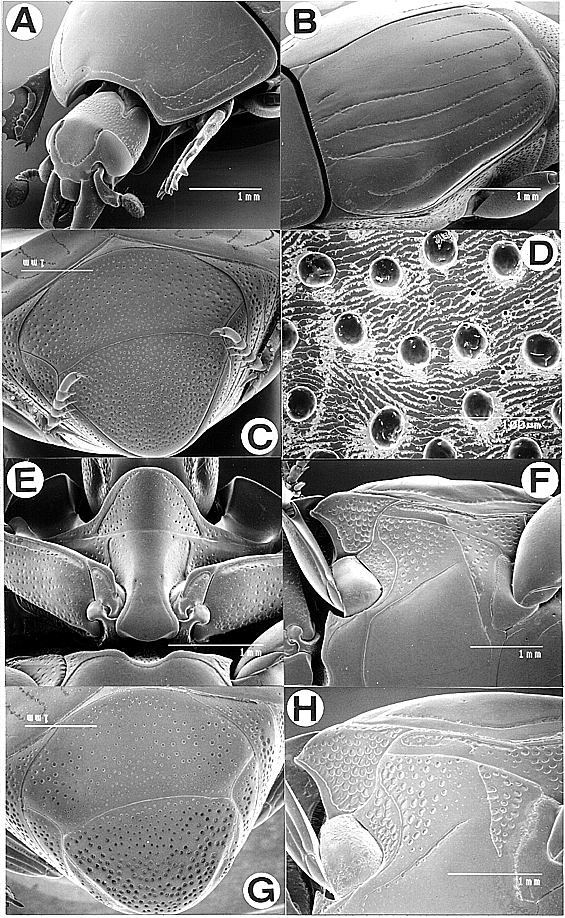
Fig. 17 (on page 28). A-F: Margarinotus (Ptomister) babai M.
Ohara, n. sp. A: Head and pronotum, oblique view. B: Left elytron,
oblique view. C: Propygidium and pygidium, caudal view. D: Punctation
of pygidium. E: Prosternum, ventral view. F: Mesosternum, metasternum
and epipleura of elytron, ventral view. G H: M. (P.) boleti
(Lewis). G: Propygidium and pygidium, caudal view. H: Mesosternum,
metasternum and epipleura of elytron, ventral view. [A, B, D:
no. 9937, Sungkung; C, E, F: no. 9939, Sungkung; G, H: no. 9942,
Odamiyama, Shikoku, Japan]. (Ohara, 1999).
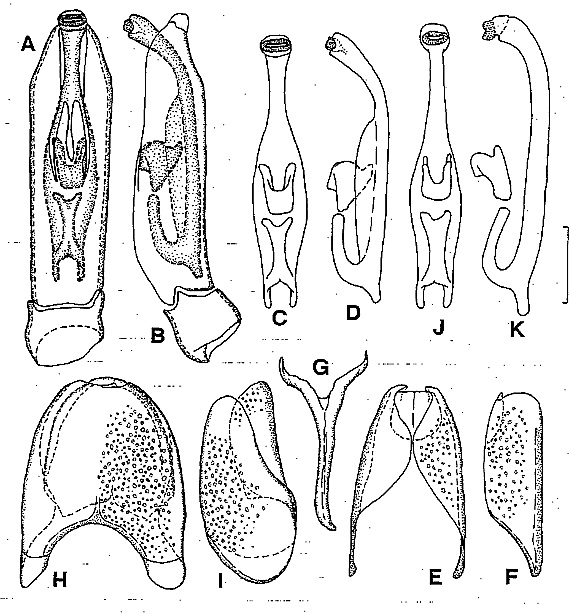
Fig. 18. A-I: Margarinotus (Ptomister) babai M. Ohara, n. sp.
Male genitalia. A: Aedeagus, dorsal view. B: Ditto, lateral view.
C: Median lobe, dorsal view. D: Ditto, lateral view. E: Ninth
and 10th tergites, dorsal view. F: Ditto, lateral view. G: Ninth
sternum (spicule), dorsal view. H: Eight tergite and sternum,
dorsal view. I: Ditto, lateral view. JK: M. (P.) boleti (Lewis).
J: Median lobe, dorsal view. K: Ditto, lateral view. [A-D: no.
9937, Sungkung; E-I: no. 9944, Shi Nan Shan, near Liukuei; J,
K: no. 9943, Kurino, Kagoshima, Japan]. (Ohara, 1999).